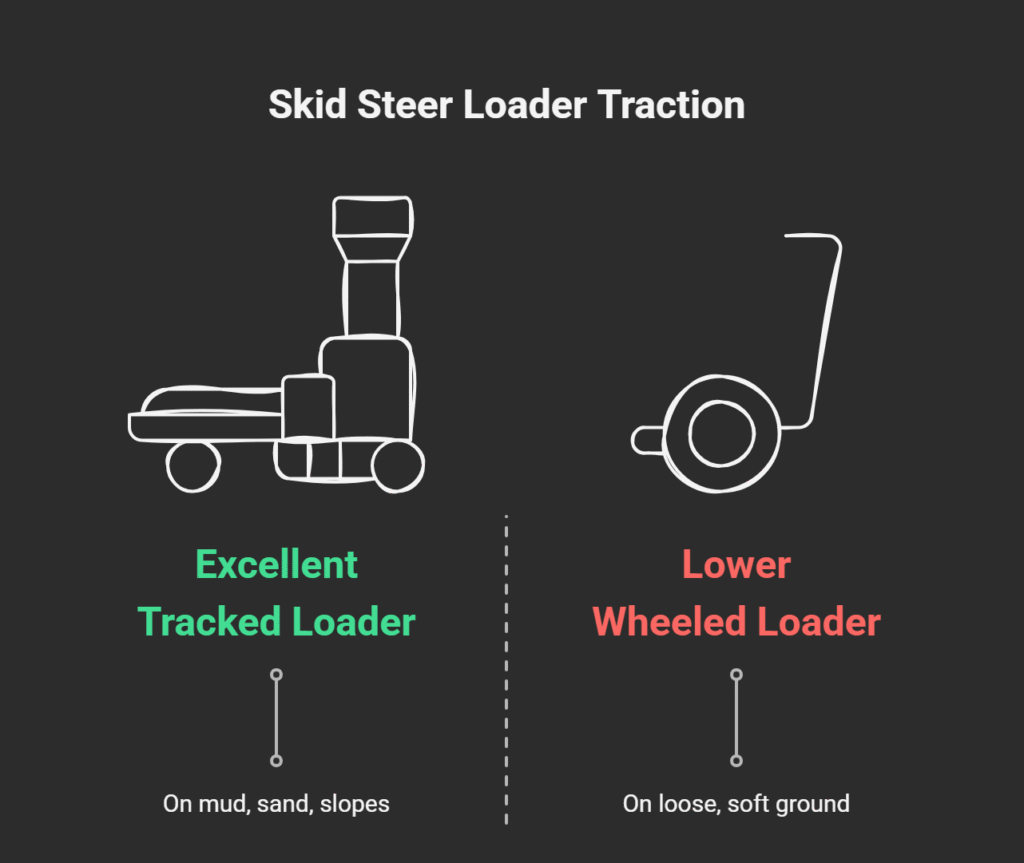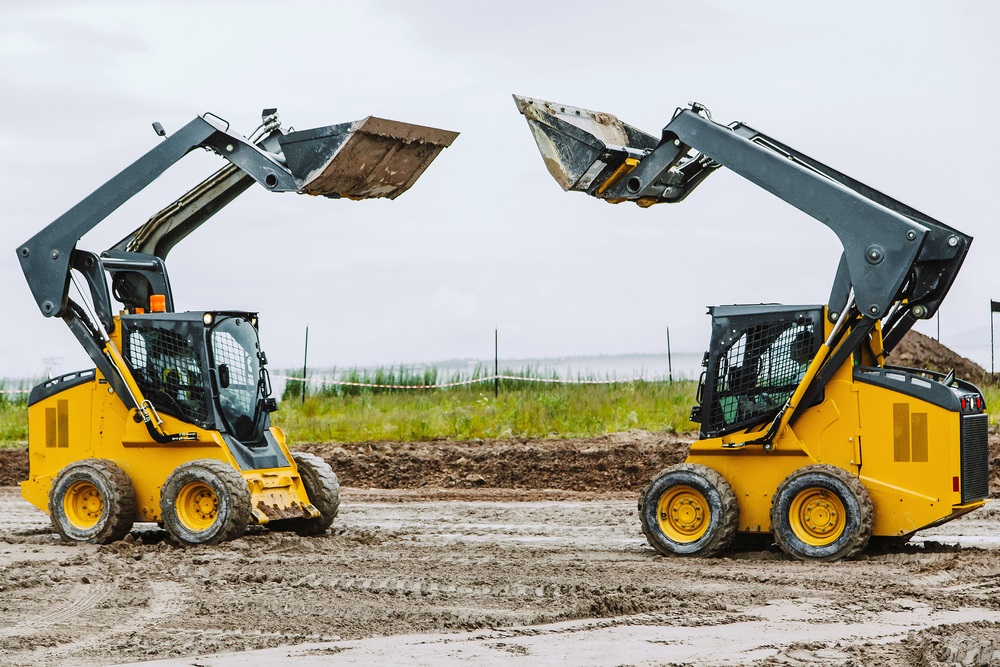Wheeled skid steer loader vs Tracked Skid Steer Loaders: What Works Best for You?
Choosing between a Wheeled skid steer loader and a Tracked Skid Steer Loaders is a major decision, which can influence the productivity, the performance, and the costs of a business of the construction, the agriculture, the landscaping, or the groundskeeping sectors in the long run.
Introduction: Learning the Differences of Skid Steer Loader Models
Skid steers are characterized by their flexibility, as they are the main units used in many types of processes ranging from material handling to site prep and snow removal. These machines, whether equipped with wheels or tracks, offer various benefits that may attract different industries and worksite conditions.
- Wheeled skid steer loader: Are characterized by their agility and speed
- Tracked Skid Steer Loaders: Are chosen for traction and adapting to different terrains
Both kinds determine operational costs, maintenance schedules, and productivity levels.
Understand Wheeled Skid Steer Loader and Tracked Skid Steer Loader:
-
Wheeled skid steer loader: Advantages, Disadvantages, and Suitable Work
Wheeled skid steer loader still remains the favourite option of most users, especially in cases where the requirement for speed and manoeuvrability is the most important one.
Benefits of Wheeled skid steer loader
- Outstanding speed: Function fastest on hard, flat surfaces such as compacted dirt, concrete, and asphalt
- Maneuverability: Perfect for very small areas and frequent repositioning
- Cost savings: Usually, the price for buying, maintaining, and repairing a Wheeled skid steer loader machine is lower than that of a Tracked Skid Steer Loaders one
Restrictions of Wheeled skid steer loader
- Traction Problems: They can get stuck or sink in mud or snow if the ground is loose; thus, they are the most effective on stable terrain
- Tire Deterioration: Tires will need a frequent change, which will raise the maintenance costs
- Ground compaction: Usually, they compact the dirt, which makes them less suitable for works related to the care of the earth and sports turf
Best Use Scenarios
- Warehousing and logistics
- Urban construction on paved surfaces
- Works that require frequent transport and fast movement
Main Features
- Steering that allows quick movements in limited spaces
- Fast transportation between job locations
- Cost-effective on stable terrain
-
Tracked Skid Steer Loaders: Pros, Cons, and Best Situations
Tracked Skid Steer Loaders, or Compact Track Loaders (CTLs), are built to deliver power and high performance in all kinds of challenging situations.
Advantages of Tracked Skid Steer Loaders
- Perfect Traction: Tracks offer the best grip, floatation, and stability, especially on mud, snow, or gravel surfaces.
- Weight Distribution and Increased Load Capacity: With tracks, the weight is spread evenly, thus, a heavy-attached can be used for smooth bucket performance.
- No Disturbance of the Ground: Tracks prevent the ground from being compacted thus, turf and landscaping are safe.
Disadvantages of Tracked Skid Steer Loaders
- Higher price: Both the initial investment and the routine maintenance costs are higher than those of a Wheeled skid steer loader loader
- Slow travel speed: Not a good choice for a long-distance travel job or when quickly repositioning is needed
- Maintenance is complicated: More frequent inspection and servicing by a specialist are required for the track system
Ideal Applications
- Landscaping and turf protection
- Wet, muddy, or uneven terrain
- Grading on slopes or rugged surfaces
Key Attributes
- Consistent performance in rain, mud, and snow
- Higher operator comfort as a result of less bouncing
- Improved safety and traction on hills and slopes
Wheeled skid steer loader vs Tracked Skid Steer Loaders: Direct Comparison
| Attribute | Wheeled skid steer loader | Tracked Skid Steer Loaders |
| Traction | Lower on loose/soft ground | Excellent on mud/sand/slopes |
| Maneuverability | Superior in tight spaces | Good, but slower turning |
| Surface Impacts | May damage turf/compact dirt | Reduced ground disturbance |
| Speed | Fast on paved surfaces | Slower overall |
| Maintenance Cost | Lower for routine repairs | Higher, especially tracks |
| Upfront Cost | Usually less expensive | More expensive |
| Load Capacity | Moderate, best on solid ground | Higher, especially for uneven terrain |

Operator Insights and Real-World Use Cases
Through their day-to-day work, operators come up with and, then, share the following peak points of their experience:
- Wheeled skid steer loader are the tools that bring the highest output to an urban or indoor type of work with a limited amount of ground hazards
- Tracked Skid Steer Loaders “are almost unlimited in their going,” hence, they are the necessary tools for landscaping contractors, groundskeepers, and all those who face hard site conditions
- Many companies keep both types in their yards to be able to deal with seasonal and site-specific challenges
Quick Decision Checklist
- Is majority of the work being done on paved or urban surfaces? If yes, then go for a Wheeled skid steer loader machine.
- Is your jobsite frequently wet, muddy, or sloped? Then you should be looking at Tracked Skid Steer Loaders.
- Is preventing turf from being damaged extremely important? If so, then choose the Tracked Skid Steer Loaders one.
- Are cost and maintenance your most important constraints? Then you should be thinking of Wheeled skid steer loader machines.
FAQs – Wheeled skid steer loader or Tracked Skid Steer Loaders
What to use for snow removal: Wheeled skid steer loader or Tracked Skid Steer Loaders?
In slippery conditions, Tracked Skid Steer Loaders units can provide better traction while Wheeled skid steer loader machines may be preferred on paved lots to prevent surface damages.
Do Tracked Skid Steer Loaders have a longer lifespan than Wheeled skid steer loader models?
Tracked Skid Steer Loaders units are generally more durable in tough terrains, but when tracks wear out, they require more expensive maintenance.
What are the differences in maintenance costs between Wheeled skid steer loader and Tracked Skid Steer Loaders?
Wheeled skid steer loader generally have lower routine costs, whereas Tracked Skid Steer Loaders require more specialized care and expensive track replacement.
Are Wheeled skid steer loader capable to handle rough terrain?
They are limited in mud, snow, and loose gravel, which can stop operations and result in them being stuck.
Where would you use a Tracked Skid Steer Loaders rather than a Wheeled skid steer loader one?
Tracked Skid Steer Loaders: muddy landscapes, slopes, landscaping, and grading jobs. Wheeled skid steer loader: concrete, asphalt, urban construction, and warehousing.
Is it worth to buy a Tracked Skid Steer Loaders at a higher price?
Yes, if the business is facing demanding conditions or needs the maximum stability; otherwise, Wheeled skid steer loader machines are a better option for standard tasks.
How do ground conditions influence the decision between Wheeled skid steer loader and Tracked Skid Steer Loaders?
Tracks are designed to “float” on soft ground; wheels are better for hard-packed, flat sites.
Statistical Decision: Which Skid Steer Loader Fits You Best?
The main factors that you should consider when deciding between a Wheeled skid steer loader and a Tracked Skid Steer Loaders for your next purchase are your usual worksite conditions, your operating budget, your maintenance resources, and the attachments you plan to use.
In case you are looking to speed up your work, protect the surface or move anywhere easily with your machine, both choices come with great benefits that you may match with your business needs.
To get personalized recommendations and stay updated with the latest industry trends, you can always talk to equipment specialists and access reliable sources such as Skid Steer Loader Hub—your helper in heavy ground preparation and material handling.




